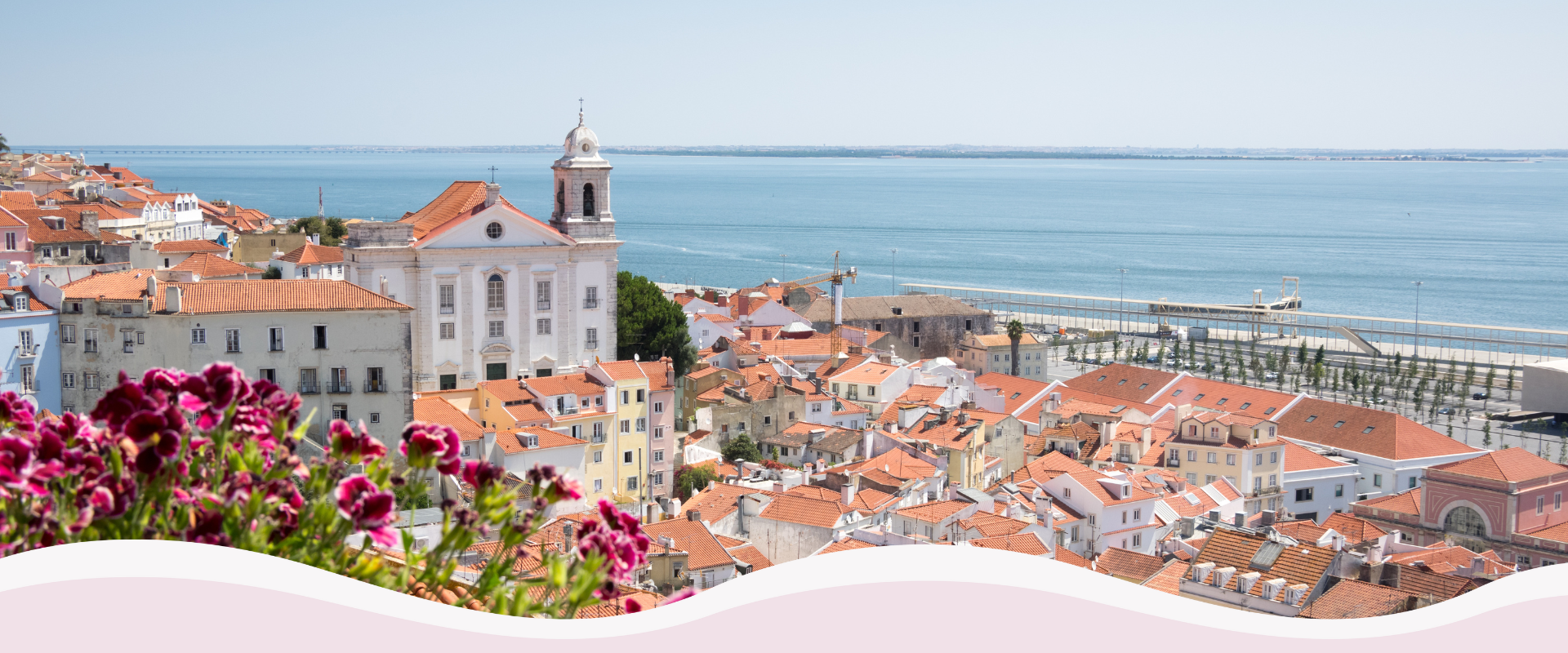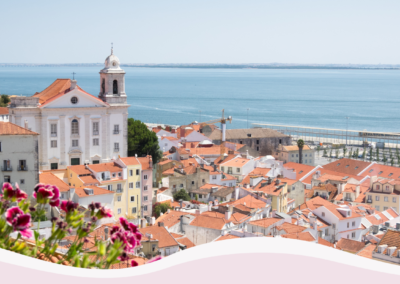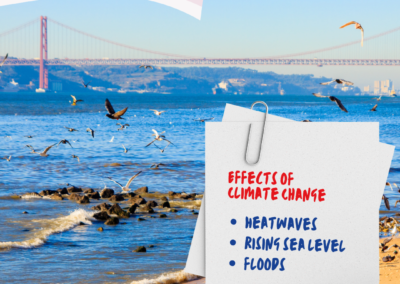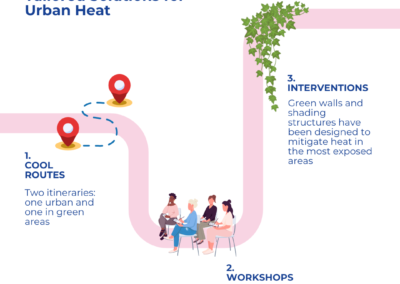Lisbon is changing. Heatwaves are becoming more frequent, with an increase in extremely hot days and periods of drought that put pressure on the city’s water resources.
Another challenge concerns rising sea levels. While flooding is not yet a critical issue, climate studies indicate that the risk of sudden floods will increase in the coming years.
To address these challenges, Lisbon is applying the Cool Noons method, based on mapping, engagement, and experimentation. The whole Cool Noons team will be visiting Lisbon in occasion of the next Steering Committee, from March 31st to April 1st: an opportunity to live in person the stages of the project and actively take part in testing the routes and designing solutions.
- Cool Routes
Two main routes have been selected, designed to offer cooler alternative paths for moving around the city.
1.Urban Route → This route runs through the city, passing through strategic points such as libraries, markets, and historic shops. It allows movement through shaded areas or locations with access to water sources.
2.Green Areas Route → Located in the Parque Florestal de Monsanto, this itinerary encourages residents and tourists to explore less crowded but cooler areas, using vegetation as a natural way to mitigate heat.
- Stakeholder and Expert Involvement
To develop concrete solutions, the project has engaged experts, urban planners, and municipal representatives through dedicated workshops. The goal has been to analyze the city’s critical areas and assess the feasibility of proposals, balancing urban needs with climate adaptation strategies.
- Innovative Solutions to Mitigate Heat
Among the solutions under study, Lisbon is evaluating the implementation of green walls and shading structures in the most heat-exposed areas. These interventions are currently in the feasibility study phase, requiring technical and economic analysis before potential implementation. The objective is to carry out these interventions before summer, ensuring practical and effective solutions to counteract the urban heat island effect.
Follow the Cool Noons project on our social channels to stay updated!





